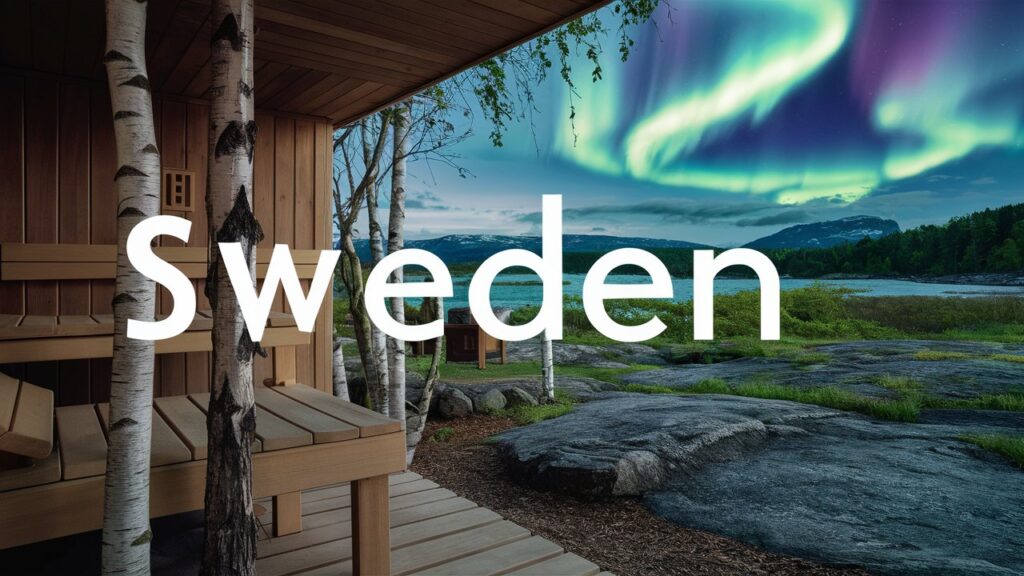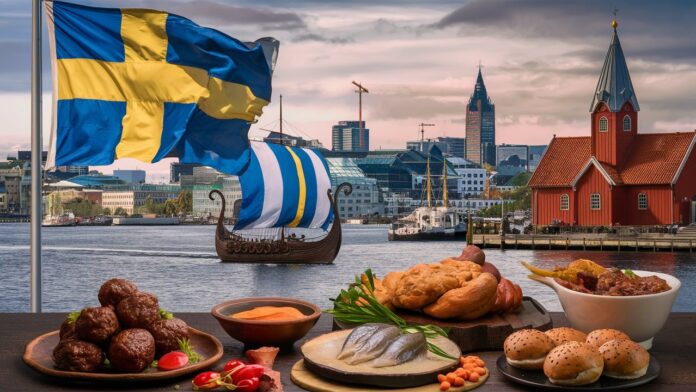Introduction
Sweden, a Nordic nation synonymous with innovation, natural splendor, and egalitarian values, captivates global imagination through a unique blend of modernity and tradition. From the aurora-draped Arctic wilderness to the sleek minimalism of Stockholm’s design studios, this country of 10 million thrives on contrasts. Its legacy spans ancient Viking sagas, world-conquering pop music, and a societal model that prioritizes welfare and sustainability. Beyond stereotypes of meatballs and flat-pack furniture, Sweden’s identity is woven from deep forests, pioneering tech revolutions, and a cultural ethos of lagom—balance in all things. This article unravels the multifaceted tapestry of Sweden’s global renown, revealing why this Scandinavian powerhouse continues to inspire admiration worldwide.
Stunning Natural Landscapes and Wilderness
Sweden’s untamed beauty defines its national soul, offering a dramatic mosaic of landscapes that shift from Arctic tundra to Baltic archipelagos. The northern Lapland region, a UNESCO World Heritage site, lures travelers with its ethereal Northern Lights, sprawling ice hotels, and the ancestral home of the Sámi people, Europe’s last Indigenous reindeer herders. Further south, the Swedish countryside unfolds in a patchwork of deep boreal forests—covering 69% of the nation—crystalline lakes like Vänern (Europe’s third-largest), and over 267,570 islands peppering the coastline. Iconic natural phenomena include the Midnight Sun, where summer nights never darken above the Arctic Circle, and the Kungsleden hiking trail, a 440-kilometer wilderness trek through alpine valleys. National parks such as Abisko and Sarek protect rare wildlife, including lynx, wolves, and moose, embodying Sweden’s Allemansrätten (“everyman’s right”)—a law granting public access to nature, reinforcing the cultural reverence for the outdoors.
Pioneering Design and Innovation
Sweden’s design philosophy marries functionality with elegant minimalism, a globally influential aesthetic rooted in the Swedish Modern Movement. Brands like IKEA democratized Scandinavian design through affordable, modular furniture championing clean lines and natural materials, while H&M revolutionized fast fashion with sustainable initiatives. Beyond consumer goods, Sweden’s tech innovation ecosystem birthed transformative platforms: Spotify reshaped music streaming, Skype (founded by Swedes) redefined communication, and Ericsson pioneered mobile telephony. Stockholm, dubbed the “Unicorn Factory,” produces more billion-dollar startups per capita than any city outside Silicon Valley, fueled by a culture that prizes creativity and problem-solving. This ingenuity extends to public infrastructure—solar-powered “smart roads” and carbon-negative buildings—epitomizing Sweden’s mantra that design should serve society.
The Swedish Welfare Model
Sweden’s social welfare system is a blueprint for egalitarianism, built on high taxation funding universal healthcare, tuition-free education, and extensive parental leave (480 days per child). Known as the Folkhemmet (“People’s Home”), this model promotes gender equality—Sweden consistently ranks top five globally in gender parity indices—with subsidized childcare enabling high female workforce participation. Generous unemployment benefits and elder care underscore a commitment to collective well-being, though debates persist about sustainability amid demographic shifts. The system fosters societal trust: Swedes exhibit high faith in institutions, low corruption, and a robust work-life balance (arbeitsglädje—”joy in work”). This framework not only reduces poverty but also cultivates a culture where innovation flourishes without existential insecurity.
Iconic Swedish Cuisine
Beyond the ubiquitous meatballs (traditionally served with lingonberries and cream sauce), Swedish cuisine reflects seasonal abundance and preservation traditions honed in long winters. Smörgåsbord, a lavish buffet, showcases herring in myriad forms (mustard, onion, or matjes), gravlax (dill-cured salmon), and Västerbotten cheese pie. Fika—more ritual than coffee break—anchors daily life, pairing espresso with cinnamon buns (kanelbullar) or cardamom-scented pastries. Regional specialties include northern surströmming (fermented herring, an acquired taste) and southern spettekaka (pyramid cake). New Nordic cuisine, led by Stockholm’s Michelin-starred restaurants like Frantzén, reimagines these staples with foraged ingredients (chanterelles, cloudberries), cementing Sweden’s culinary evolution from hearty sustenance to gourmet artistry.
Global Pop Culture Influence
Sweden punches far above its weight in pop culture, shaping global music and literature. ABBA’s disco anthems remain timeless, while Avicii and Swedish House Mafia dominated electronic dance music. Max Martin, the enigmatic producer behind hits for Britney Spears and The Weeknd, embodies Sweden’s songwriting prowess. In literature, Stieg Larsson’s Millennium series (The Girl with the Dragon Tattoo) thrust Nordic noir onto bestseller lists, exploring societal tensions through detective Lisbeth Salander. Film director Ingmar Bergman’s introspective classics (The Seventh Seal) and contemporary TV hits like Young Royals amplify Sweden’s narrative reach. This creative ferment stems from robust public arts funding and a bilingual education system enabling effortless cultural export.

Viking Heritage and Historical Legacy
The Viking Age (793–1066 AD) anchors Sweden’s historical identity, marked by seafaring warriors who traded as far as Byzantium and settled Russia (the Rus’ people). Artifacts in Stockholm’s Historiska Museum—runestones, ornate helmets, and longships—debunk myths of horned helmets, revealing sophisticated traders and explorers. Old Norse traditions endure in summer solstice Midsommar celebrations, where flower crowns and maypole dances honor pagan roots. Later epochs saw Sweden’s rise as a 17th-century empire under King Gustavus Adolphus, with grand palaces like Drottningholm and Kalmar Castle symbolizing its golden age. This layered history coexists with modernity, as seen in Gamla Stan (Stockholm’s medieval old town), where cobbled streets whisper tales of Hanseatic merchants.
Sustainability and Environmental Leadership
Sweden is synonymous with green innovation, aiming to become the world’s first fossil fuel-free nation by 2045. Over 54% of its energy comes from renewables—chiefly hydro and wind—powered by policies like carbon taxes and district heating from biofuel. Cities excel in waste management; less than 1% of trash ends in landfills, with “recycling stations” converting waste to energy or materials. The concept of flygskam (“flight shame”) reflects cultural commitment to low-carbon travel, boosting rail networks. Brands like Volvo pledge all-electric cars by 2030, and Northvolt leads sustainable battery production. This ethos permeates daily life: from urban “green corridors” to schools teaching hållbarhet (sustainability) as a core value.
Fika: The Cultural Ritual of Connection
Fika transcends coffee breaks—it’s a cornerstone of Swedish social fabric. This twice-daily pause mandates stepping away from work to savor slow moments with colleagues, friends, or family over kanelbullar and espresso. Unlike hurried caffeine grabs, fika emphasizes presence, conversation, and gemytlighet (coziness), often in candlelit cafés during dark winters. Companies legally mandate fika breaks, recognizing their role in reducing stress and fostering teamwork. The ritual encapsulates lagom—the Swedish ideal of moderation—by balancing productivity with well-being. From Gothenburg’s historic Haga district to rural villages, fika spaces serve as democratic hubs where hierarchies dissolve over shared pastries, reinforcing community in an individualistic age.
Conclusion
Sweden’s global identity is a study in harmonious duality: a land where Arctic silence meets Spotify’s digital beats, where Viking runestones stand near carbon-neutral cities. Its fame springs not just from tangible exports—IKEA furniture, ABBA melodies, or meatballs—but from intangible values: a relentless pursuit of equality, respect for nature’s fragility, and faith in collective progress. As climate urgency reshapes the world, Sweden’s model of innovative sustainability and quality of life offers resonant lessons. Whether through the communal warmth of fika or the solitude of northern lights, Sweden endures as a testament to the power of balancing tradition with fearless reinvention.
Frequently Asked Questions
Q: What food is Sweden most famous for?
A: Beyond meatballs, Sweden is renowned for smörgåsbord (feast buffets), pickled herring, gravlax (cured salmon), and cinnamon buns. Regional specialties include surströmming (fermented herring) and cloudberry jam.
Q: How does Sweden’s education system work?
A: Sweden offers tuition-free education from preschool to university, including meals and books. Emphasis is placed on critical thinking over exams, with vocational and academic paths equally valued.
Q: Why is Sweden considered a leader in sustainability?
A: Sweden recycles 99% of its waste, runs on 54% renewable energy, and enforces strict green policies (e.g., carbon taxes). Its “circular economy” converts waste to energy, heat, or reusable materials.
Q: What is the significance of Midsommar?
A: Midsommar celebrates the summer solstice with flower crowns, maypole dances, and feasts. Rooted in pagan fertility rites, it’s a national holiday symbolizing light, community, and nature’s bounty.
Q: Do Swedes speak English fluently?
A: Yes! Over 90% speak English, aided by mandatory English education from age 7/8 and subtitled (not dubbed) foreign media, fostering bilingual proficiency.
Q: What makes Swedish design unique?
A: It blends minimalism, functionality, and natural materials (wood, wool). The principle of “beautiful everyday objects for everyone” drives brands like IKEA, Marimekko, and Orrefors glassware.
Q: Is Sweden part of the EU?
A: Yes, but it retains its currency (Swedish Krona, SEK) and has not adopted the euro, reflecting its balanced approach to European integration.

